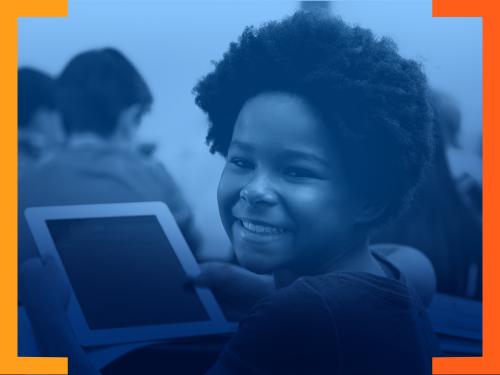The rapid expansion of new technologies into every sector has contributed to the proliferation of alternative models of education, learning, and skill signaling in global labor markets. From digital badges to bootcamps to learning and employment records (LERs), a wide range of public, private, and nonprofit initiatives and platforms have emerged to address ongoing demand for education and skills among employers and workers alike. Within the next five years, 50 percent of all employees will need reskilling and 40 percent of core skills are expected to change (World Economic Forum, 2020).
Beyond simply moving existing courses and curricula into an online environment, the latest wave of educational innovation represents a more fundamental shift in how education and skills data are gathered, stored, taught, verified, accessed, and signaled in the labor market (Figure 1). Some observers refer to this shift as “Education 3.0,” (Borden, 2015) and others refer to it as “The Internet of Education” (Learning Economy Foundation, 2020).
Figure 1. The accelerating pace of technology for learners and workers
Source: Authors’ analysis.
This paper provides a high-level map of the landscape of education and labor market innovations in formal and informal education (including the workplace), with an emphasis on digital credentials and LERs (Figure 2). Most of the innovation is occurring among shorter, less intensive learning opportunities that are also more job-specific or hands-on. Rather than completing a longer program, individuals bundle a combination of short-term credentials or work experiences to demonstrate their qualifications in the labor market. Moreover, the pandemic-inspired reliance on remote learning has highlighted how little we know about how to deliver learning effectively and equitably through digital platforms, and very little is known about the outcomes of digital credentials, digital wallets, LERs, and other innovations.
Figure 2. New digital technologies emerging in education and employment 
Source: Authors’ analysis.
Our goal is to make the digital education-to-career ecosystem more accessible to nontechnical audiences and specifically to inform decisionmakers, such as labor and education leaders, worldwide about the promises and perils of these initiatives for expanding access to opportunity. As we began this work, we found a disconnect: Most of these initiatives are led by organizations in the world’s most wealthy, industrialized countries. Yet, youth and adults in low-income countries and in marginalized communities within wealthy countries are most likely to be excluded from traditional high-quality education and training opportunities. As such, these low-income countries and marginalized communities have the most to gain from having a more diverse range of learning and hiring options, and getting more user input in the design and implementation of these innovations is essential.
Many advocates argue that digital credentials, LERs, and other tech-enabled education and labor market solutions have the potential to increase equity in access to better livelihoods and well-being by offering more accessible learning and upskilling opportunities. However, critics are concerned that these innovations may ultimately exacerbate the digital divide more than they democratize learning—especially in the absence of new governance frameworks to assure quality, ease transferability, protect workers’ rights (including data ownership rights), monitor algorithmic bias, and address inequities in access and awareness.
The overarching research questions guiding this paper are:
- What are the leading global initiatives currently underway to develop digital credentials and LERs?
- Where are they located?
- Who are the main parties involved, and what problems are they trying to solve?
This paper will also highlight some of the key tensions, risks, and debates that are arising related to digital credentials and hiring platforms.
The goal of this paper is to provide leaders with frameworks to make sense of what has become a messy and fast-changing area of educational innovation—and ultimately to support the development of new policies and governance systems to assure equity, access, and quality.
The research team drew on primary and secondary research to inform the landscape analysis. The team conducted consultations, attended convenings, and held interviews with 45 informants engaged in digital credentials initiatives, LER pilots, and other relevant education and skills research and projects. In addition, the team gathered and reviewed academic literature and reports. As this landscape paper is preliminary in nature and aims to provide a snapshot of a rapidly evolving ecosystem, it is not intended to be exhaustive but rather to offer high-level frameworks for understanding the range of initiatives taking place globally and key issues shaping their implementation that are important to be on policymakers’ radar. The landscape study and the feedback we receive on it will inform the development of a final report with case studies that shed light on how countries, collaboratives, and higher education institutions are trying to adapt to these innovations while also maintaining quality, ethical use of data, digital equity, and interoperability.
The Brookings Institution is committed to quality, independence, and impact.
We are supported by a diverse array of funders. In line with our values and policies, each Brookings publication represents the sole views of its author(s).









